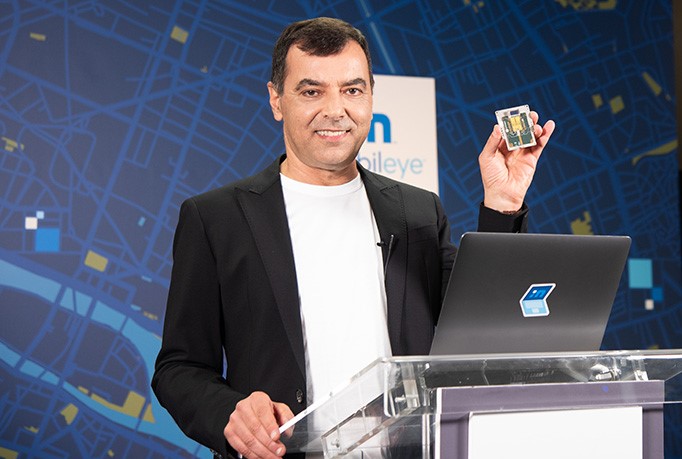
By John Bugailiskis
JERUSALEM — At the all-virtual 2021 Consumer Electronics Show, Intel’s Mobileye is previewing its lidar system-on-chip (SoC) vehicle detection solution for autonomous vehicles (AVs), which it claims will be “more capable than human drivers.”
Lidar, which stands for light detection and ranging, is a remote sensing method that uses light in the form of a pulsed laser to measure distances between objects.
During an online briefing with reporters, Mobileye co-founder Amnon Shashua (above) said that Mobileye’s test fleets began driving in Detroit in late 2020 and plan to expand to Tokyo, Shanghai, Paris, and potentially New York City (pending regulation) early this year.
The news comes as the Covid-19 outbreak has delayed AV testing across the world, for example, Ford announced this past April it was pushing back the launch of its robotaxi and autonomous delivery services from 2021 to 2022.
But thanks to the backing of Intel and Mobileye’s approach means it can “scale at an unprecedented manner,” added Shashua. “From the beginning, every part of our plan aims for rapid geographic and economic scalability – and today’s news shows how our innovations are enabling us to execute on that strategy.”
Mobileye’s solution is based on an inexpensive camera as the primary sensor combined with a redundant lidar sensing system enabling safety-critical performance that is “at least three orders of magnitude safer than humans.” Mobileye claims its True Redundancy system can validate the level of performance faster and at a lower cost than those who are doing so with a fused (camera-only) system.
Mobileye’s software-defined imaging radar technology utilizes 2304 channels, 100 DB dynamic range and 40 DBc side lobe level that together enable the radar to build a sensing state “good enough for driving policy supporting autonomous driving.”
Shashua also outlined how Intel’s specialized silicon photonics fab is able to put active and passive laser elements on a silicon chip.
“This is really game-changing,” Shashua said of the lidar SoC expected to be ready by 2025. “And we call this a photonic integrated circuit, PIC. It has 184 vertical lines, and then those vertical lines are moved through optics. Having fabs that are able to do that, that’s very, very rare. So this gives Intel a significant advantage in building these lidars.”
Mobileye also says it is rolling out automated, worldwide high-definition mapping. It claims its technology can now map the world automatically with nearly 8 million kilometers tracked daily and nearly 1 billion kilometers completed to date.
To demonstrate the scalable benefits of the automatic AV maps, Mobileye will begin driving its AVs in four new countries without sending specialized engineers to those new locations. The company will instead send vehicles to local teams that support Mobileye customers. The company says that after appropriate training for safety, those vehicles will be able to drive.
While it wasn’t mentioned during the conference, for this new in-car tech to deliver on its promise, it is dependent on the rollout of 5G wireless technology by carriers.



